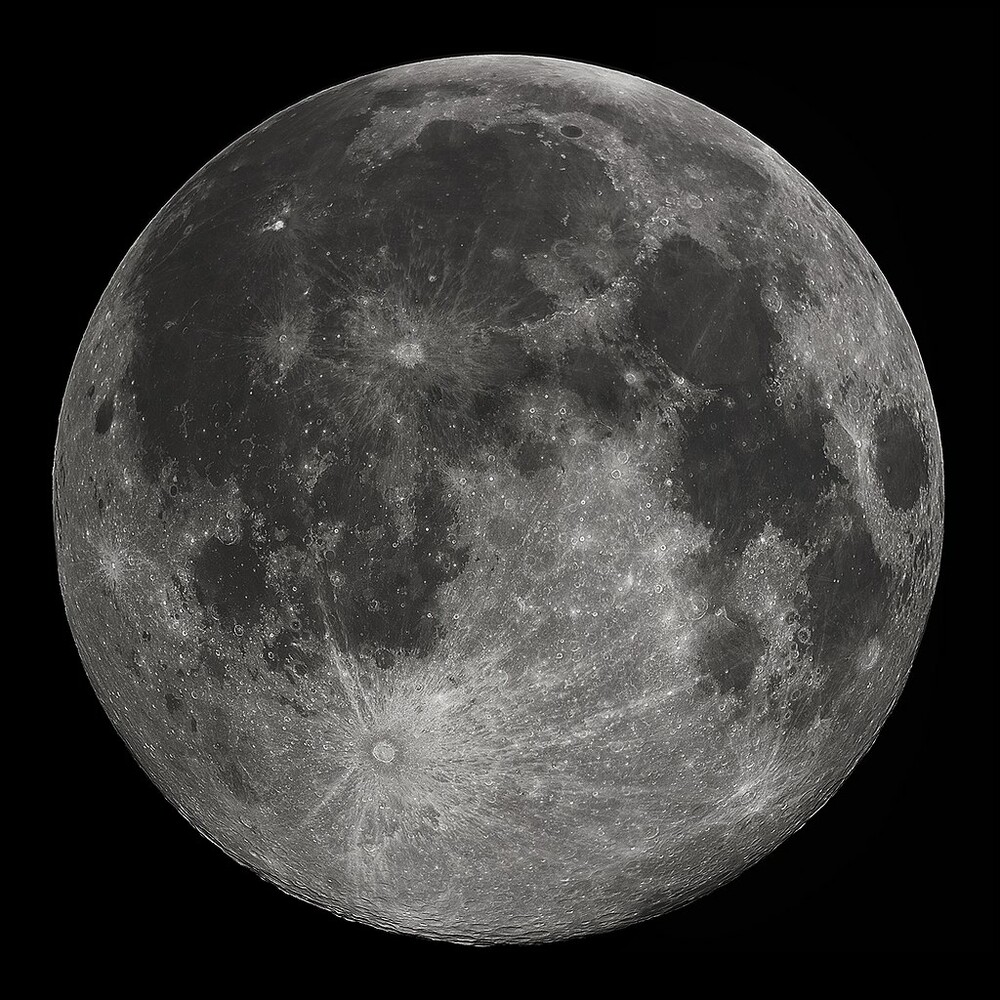Mercury
The smallest one

Mercury is the smallest planet in the Solar System. It is the closest planet to the sun. It makes one trip around the Sun once every 87.969 days. Mercury is bright when we can see it from Earth. It has an apparent magnitude ranging from −2.0 to 5.5. It cannot be seen easily because it is usually too close to the Sun. Because of this, Mercury can only be seen in the morning or evening twilight or when there is a solar eclipse.
Less is known about Mercury than about other planets of our Solar System. Even with telescopes only a small, bright crescent can be seen. It is also hard to put a satellite in orbit around it. Two spacecraft have visited Mercury. The first one was Mariner 10. It only made a map of about 45% of the Mercury's surface from 1974 to 1975. The second is the MESSENGER spacecraft, which finished mapping Mercury in March 2013.
Mercury looks like Earth's Moon. It has many craters and smooth plains. It has no moons and no atmosphere as we know it. However, Mercury does have an extremely thin atmosphere, known as an exosphere. Mercury has a large iron core. Because of this Mercury has a magnetic field about 1% as strong as that of the Earth. It is a very dense planet because its core is very big. Temperature at the surface can be anywhere from about 90 to 700 K (−183 °C to 427 °C, −297 °F to 801 °F),[16] with the subsolar point being the hottest and the bottoms of craters near the poles being the coldest.
Known sightings of Mercury date back to at least the first millennium BC. Before the 4th century BC, Greek astronomers thought that Mercury was two different objects: The one that they were only able at sunrise, they called Apollo; the other one that they were only able to see at sunset, they called Hermes. The English name for the planet is from the Romans, who named it after the Roman god Mercury. The symbol for Mercury is based on Hermes' staff.
Even though Mercury is the closest planet to the Sun, it is not the hottest. This is because it has no greenhouse effect. The heat that the Sun gives it, quickly escapes into space. The hottest planet is Venus.
Geography
Mercury's surface looks like the surface of the Moon. It has plains that look like mares and has lots of craters.Mercury was hit by a lot of comets and asteroids 4.6 billion years ago. Mercury was also hit during a period called the Late Heavy Bombardment. Mercury has lots of craters because it does not have any atmosphere to slow objects down.Images gotten by MESSENGER have shown that Mercury may have shield volcanoes.
The surface temperature of Mercury ranges from 100 to 700 K (−173 to 427 °C; −280 to 800 °F) at the most extreme places.Even though the temperature at the surface of Mercury in the day is very high, observations suggest that there is frozen water on Mercury.
Mercury is too small and hot for its gravity to keep any thick atmosphere for a long time. It does have a thin exosphere that is made up of hydrogen, helium, oxygen, sodium, calcium, potassium. This exosphere is blown away and replenished from lots of sources. Hydrogen and helium may come from the solar wind. Radioactive decay of elements inside the crust of Mercury is another source of helium, and also sodium and potassium.
Orbit and rotation
Mercury has the most eccentric orbit of all the planets in the Solar System. It has an eccentricity of 0.21. It ranges from 46,000,000 to 70,000,000 km (29,000,000 to 43,000,000 mi) away from the Sun. Mercury takes 87.969 Earth days to go around the Sun. Mercury's axial tilt is 0.027 degrees.
In the future, because Mercury's orbit's is very eccentric and Jupiter's huge gravity, its orbit may become unstable and the following things may happen:
- It crashes into the Sun
- It enters the Sun's Roche limit slowly and is torn apart
- It crashes into Venus
- It crashes into Earth
- It is flung out of the Solar System and becomes a rouge planet
Learn more about lupus.digital
This is a demo website for drunomics' lupus.digital. Does it fit for your website?